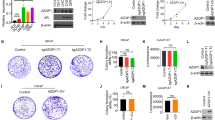Abstract.
Transitional epithelium of the urinary bladder can be damaged during, for example, catheterization, overstretching due to obstructed voiding, or partial resection. The subsequent repair process can be stimulated by specific proteins such as epidermal growth factor (EGF) and transforming growth factor-α (TGFα). However, little is known about the role of EGF-like growth factors and their respective receptors in human urothelial repair. In this study, we examined the effects of EGF, TGFα, amphiregulin and heregulin-α (HRGα) on proliferation, wound closure, and the expression of their receptors c-erbB1–c-erbB4 in primary cultures of human urothelial cells in vitro. Under conditions representing intact urothelium, all EGF-like growth factors except HRGα induced proliferation. TGFα induced proliferation up to four times. Amphiregulin increased expression of c-erbB1. Treatment with either TGFα or amphiregulin resulted in higher c-erbB1 activation and c-erbB3 levels. None of the growth factors affected the constitutive expression of c-erbB2 and c-erbB4. In the repair model, both EGF and TGFα stimulated the wound closure most strongly. This was mainly achieved by increased cellular migration. Receptor expression was not affected by the addition of exogenous growth factor. The role of c-erbB2 in wound healing was further investigated with the use of antisense DNA. Wound closure could be delayed up to 50% by antisense c-erbB2 but not by mismatched or sense oligonucleotides. Excessive production (e.g. in bladder tumors) or application of EGF, TGFα or amphiregulin, but not HRGα may lead to either hyperplasia or a faster repair of damaged urothelium in vivo. These effects seem to be mediated not only via c-erbB1 but also via c-erbB2. Our results suggest that modified members of the EGF-EGFR family are potential targets for future therapies for bladder wound healing and malignancy.
Similar content being viewed by others
Author information
Authors and Affiliations
Additional information
Electronic Publication
Rights and permissions
About this article
Cite this article
Bindels, .E., van der Kwast, .T., Izadifar, .V. et al. Functions of epidermal growth factor-like growth factors during human urothelial reepithelialization in vitro and the role of erbB2. Urol Res 30, 240–247 (2002). https://doi.org/10.1007/s00240-002-0260-7
Received:
Accepted:
Issue Date:
DOI: https://doi.org/10.1007/s00240-002-0260-7




